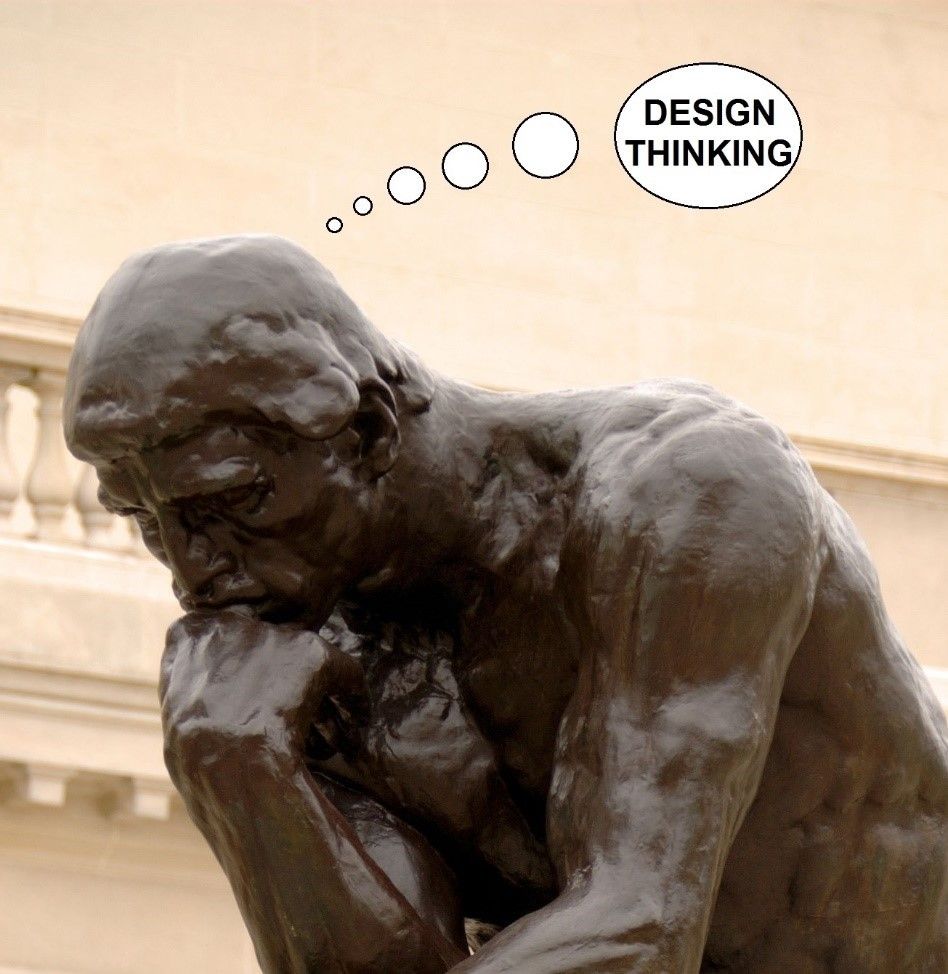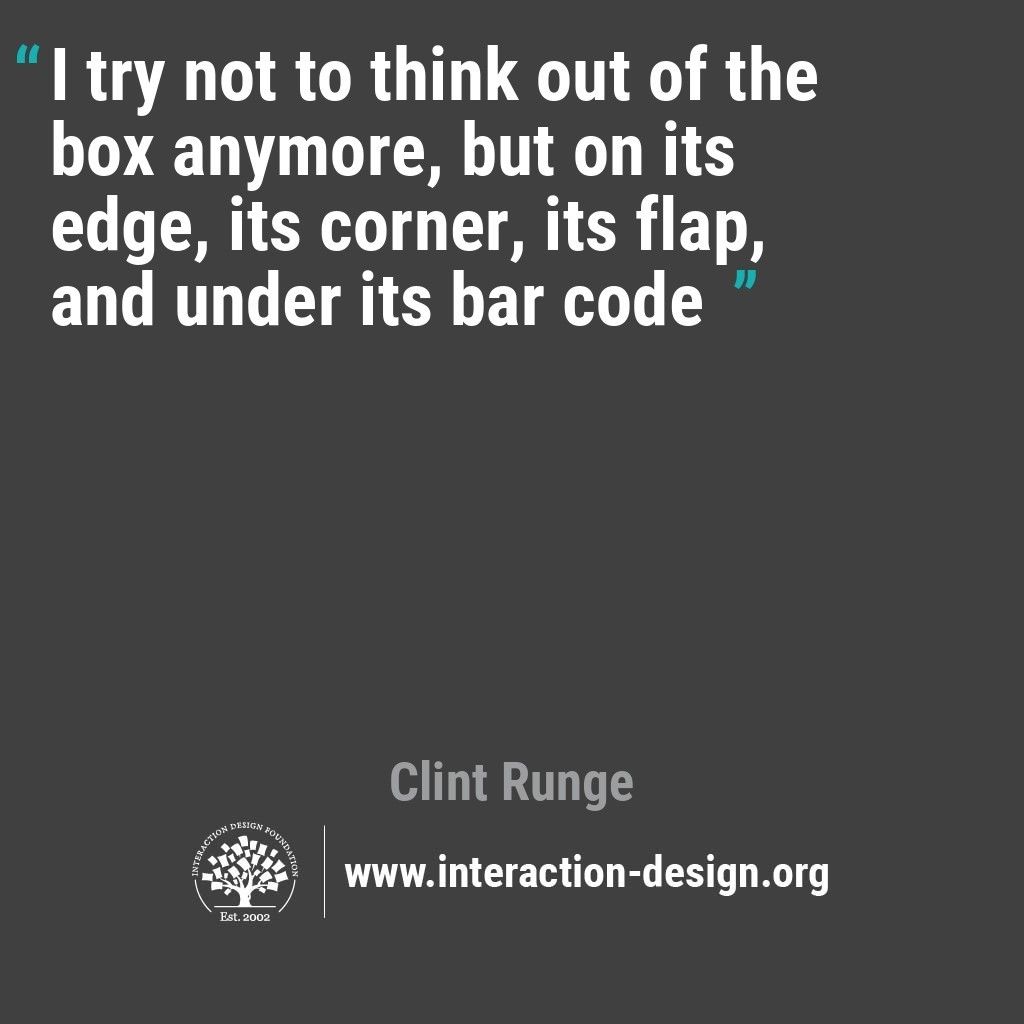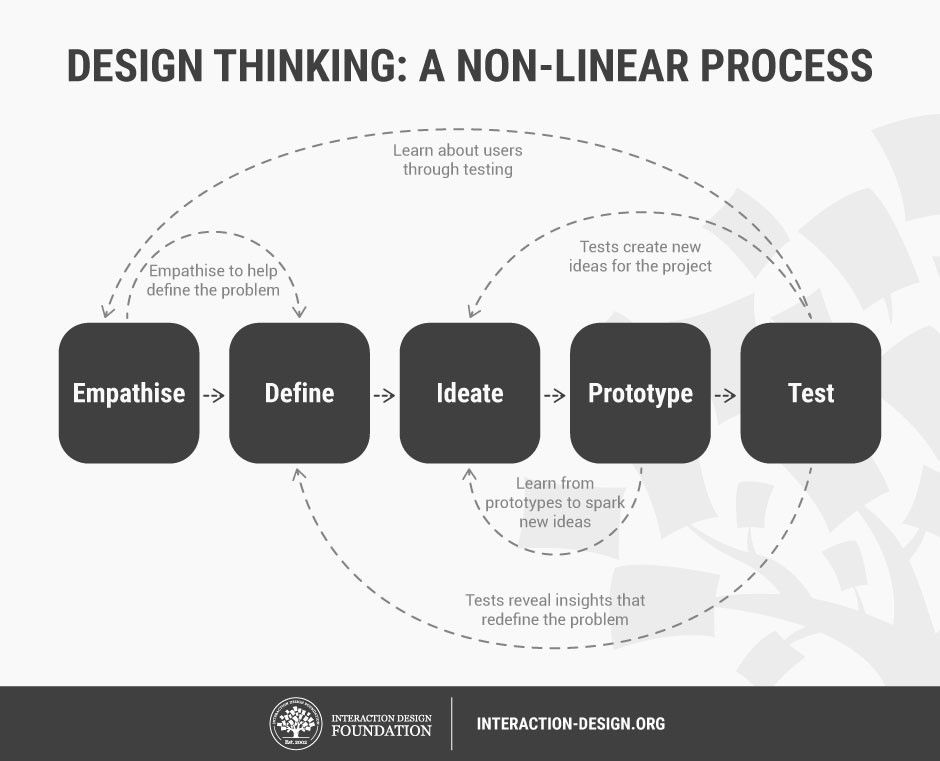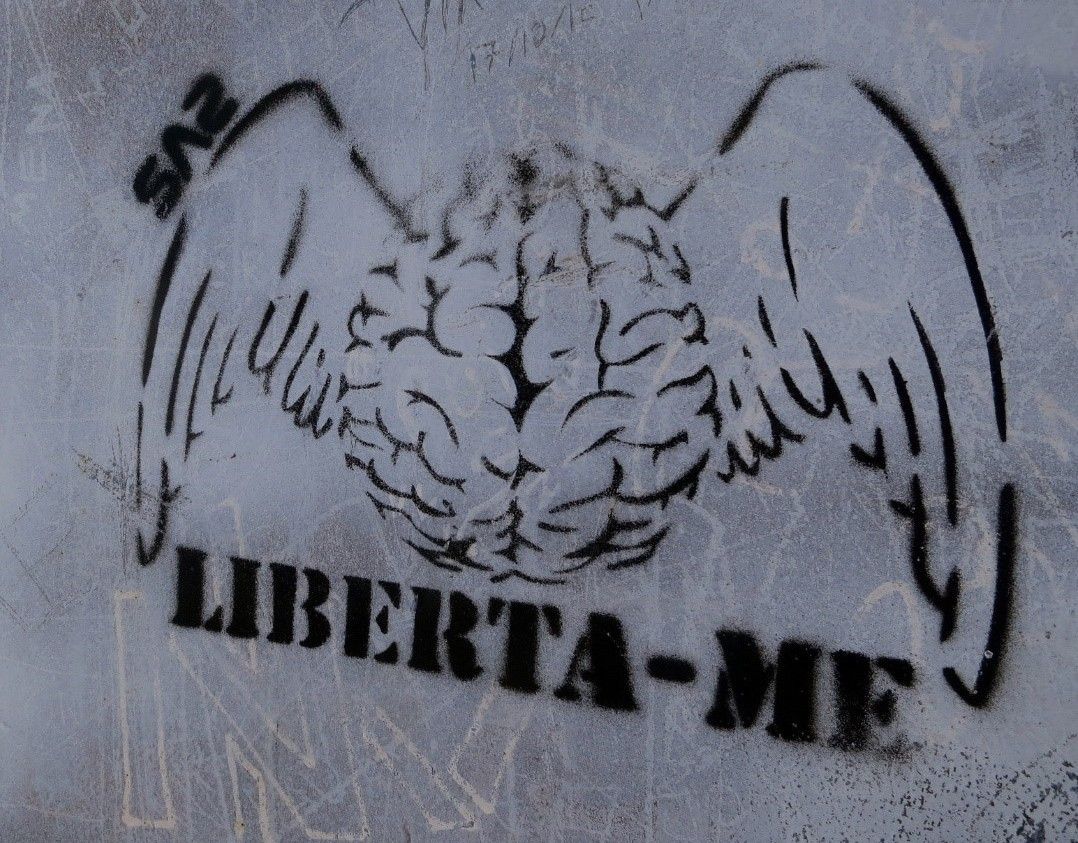The Idea of a Assumes That People Group Together in Hierarchal Fashion to Solve Problems.
Design Thinking is not an sectional property of designers—all great innovators in literature, art, music, science, engineering, and business organization take skillful information technology. So, why call it Design Thinking? What's special well-nigh Design Thinking is that designers' work processes can help u.s.a. systematically extract, teach, learn and apply these homo-centered techniques to solve problems in a creative and innovative way – in our designs, in our businesses, in our countries, in our lives.
Some of the world's leading brands, such as Apple, Google, Samsung and GE, take chop-chop adopted the Pattern Thinking arroyo, and Design Thinking is being taught at leading universities around the world, including d.school, Stanford, Harvard and MIT. But do you know what Design Thinking is? And why it's and then popular? Here, we'll cut to the hunt and tell you what information technology is and why it'southward and then in demand.
What is Design Thinking?
Design Thinking is an iterative procedure in which we seek to understand the user, challenge assumptions, and redefine problems in an attempt to identify culling strategies and solutions that might not exist instantly apparent with our initial level of understanding. At the same time, Pattern Thinking provides a solution-based approach to solving problems. It is a way of thinking and working also as a collection of hands-on methods.
Pattern Thinking revolves around a deep involvement in developing an agreement of the people for whom we're designing the products or services. It helps united states detect and develop empathy with the target user. Design Thinking helps u.s. in the procedure of questioning: questioning the trouble, questioning the assumptions, and questioning the implications. Blueprint Thinking is extremely useful in tackling problems that are sick-defined or unknown, past re-framing the problem in human-centric ways, creating many ideas in brainstorming sessions, and adopting a hands-on approach in prototyping and testing. Design Thinking as well involves ongoing experimentation: sketching, prototyping, testing, and trying out concepts and ideas.
Design Thinking'due south Phases
There are many variants of the Blueprint Thinking process in use today, and they have from three to seven phases, stages, or modes. However, all variants of Blueprint Thinking are very similar. All variants of Design Thinking embody the aforementioned principles, which were beginning described by Nobel Prize laureate Herbert Simon in The Sciences of the Bogus in 1969. Here, we will focus on the five-phase model proposed by the Hasso-Plattner Found of Design at Stanford, which is also known as d.school. Nosotros've chosen d.schoolhouse's approach because they're at the forefront of applying and teaching Blueprint Thinking. The v phases of Design Thinking, according to d.schoolhouse, are as follows:
- Empathise – with your users
- Ascertain – your users' needs, their problem, and your insights
- Ideate – by challenging assumptions and creating ideas for innovative solutions
- Prototype – to commencement creating solutions
- Test – solutions
It is of import to note that the five phases, stages, or modes are not e'er sequential. They do not have to follow any specific gild and can often occur in parallel and repeat iteratively. Given that, you should not sympathise the phases as a hierarchical or step-by-step process. Instead, you should wait at it every bit an overview of the modes or phases that contribute to an innovative project, rather than sequential steps.

Author/Copyright holder: Pixabay. Copyright terms and licence: Gratis to Use
To assistance you understand Design Thinking, we accept broken the process into five phases or modes, which are: 1. Understand, 2. Define, 3. Ideate, four. Image, and 5. Test. What's special about Design Thinking is that designers' work processes can help us systematically extract, teach, acquire, and apply these man-centered techniques to solve problems in a creative and innovative way – in our designs, in our businesses, in our nations (and somewhen, if things become really well, beyond), in our lives. Nevertheless, a keen artist like Auguste Rodin, who created this famous sculpture called "The Thinker" and originally "Le Penseur", would most likely have used the very same innovative processes in his artwork. In the same way, all great innovators in literature, art, music, science, engineering and business take practiced it and still practice it.
The Problem with Ingrained Patterns of Thinking
Sometimes, the easiest way to understand something intangible, such as Blueprint Thinking, is by understanding what it is not.
Humans naturally develop patterns of thinking modeled on repetitive activities and usually accessed knowledge. These assist united states of america in quickly applying the same actions and knowledge in like or familiar situations, but they besides take the potential to prevent us from quickly and hands accessing or developing new ways of seeing, understanding and solving problems. These patterns of thinking are oftentimes referred to as schemas, which are organized sets of information and relationships between things, actions and thoughts that are stimulated and initiated in the human heed when we run across some environmental stimuli. A single schema can incorporate a vast corporeality of information. For example, nosotros have a schema for dogs which encompasses the presence of iv legs, fur, abrupt teeth, a tail, paws, and a number of other perceptible characteristics. When the environmental stimuli match this schema — fifty-fifty when there is a tenuous link or only a few of the characteristics are present — the same pattern of thought is brought into the mind. Equally these schemas are stimulated automatically, this tin obstruct a more than fitting impression of the situation or prevent us from seeing a problem in a fashion that will enable a new trouble-solving strategy. Innovative problem solving is also known as "thinking outside of the box".
An Example of Trouble solving: The Burdened Vs. The Fresh Mind
Thinking outside of the box can provide an innovative solution to a sticky problem. However, thinking outside of the box can be a existent challenge as nosotros naturally develop patterns of thinking that are modeled on the repetitive activities and ordinarily accessed knowledge we surround ourselves with.
Some years ago, an incident occurred where a truck commuter tried to pass under a depression bridge. But he failed, and the truck was lodged firmly under the bridge. The driver was unable to keep driving through or reverse out.
The story goes that equally the truck became stuck, it caused massive traffic problems, which resulted in emergency personnel, engineers, firefighters and truck drivers gathering to devise and negotiate various solutions for dislodging the trapped vehicle.
Emergency workers were debating whether to dismantle parts of the truck or fleck away at parts of the bridge. Each spoke of a solution which fitted inside his or her respective level of expertise.
A male child walking by and witnessing the intense fence looked at the truck, at the span, then looked at the road and said nonchalantly, "Why not just let the air out of the tires?" to the absolute amazement of all the specialists and experts trying to unpick the problem.
When the solution was tested, the truck was able to drive free with ease, having suffered just the damage caused by its initial attempt to laissez passer underneath the bridge. The story symbolizes the struggles we confront where oftentimes the most obvious solutions are the ones hardest to come by because of the self-imposed constraints we work inside.

Copyright holder: Wystan, Flickr. Copyright terms and license: CC BY 2.0
It's ofttimes difficult for us humans to challenge our assumptions and everyday knowledge, because we rely on building patterns of thinking in guild to not accept to learn everything from scratch every time. We rely on doing everyday processes more or less unconsciously — for example, when nosotros go up in the morn, eat, walk, and read — merely also when we assess challenges at work and in our private lives. In particular, experts and specialists rely on their solid thought patterns, and information technology can be very challenging and difficult for experts to starting time questioning their knowledge.
The Power of Storytelling
Why did nosotros tell you this story? Telling stories can assistance united states inspire opportunities, ideas and solutions. Stories are framed around real people and their lives. Stories are important because they are accounts of specific events, not general statements. They provide usa with concrete details that help us imagine solutions to particular bug. While we're at it, please picket this 1-minute video to assist yous go started agreement what Design Thinking is about.
Design Thinking is often referred to as 'outside the box' thinking. This child shows usa why information technology's of import to challenge our assumptions and find new ways to solve our problems.
Design Thinking or 'Outside the Box' Thinking
Design Thinking is oftentimes referred to every bit 'outside the box' thinking, as designers are attempting to develop new means of thinking that practise not abide by the dominant or more than common problem-solving methods.
At the heart of Design Thinking is the intention to improve products by analyzing and understanding how users interact with products and investigating the conditions in which they operate. At the middle of Blueprint Thinking lies also the involvement and ability to inquire pregnant questions and challenging assumptions. One element of outside the box thinking is to falsify previous assumptions – i.e., to brand it possible to prove whether they are valid or not. One time we accept questioned and investigated the conditions of a trouble, the solution-generation process will help usa produce ideas that reflect the 18-carat constraints and facets of that item problem. Design Thinking offers us a means of digging that bit deeper; information technology helps us to practice the right kind of research and to image and exam our products and services so as to uncover new ways of improving the product, service or design.
Chiliad One-time Human of User Experience, Don Norman, who as well coined the very term User Experience, explains what Design Thinking is and what's and then special near it:
"…the more I pondered the nature of design and reflected on my recent encounters with engineers, business people and others who blindly solved the bug they thought they were facing without question or further report, I realized that these people could benefit from a good dose of pattern thinking. Designers accept developed a number of techniques to avert being captured by too facile a solution. They take the original problem as a proposition, not as a concluding argument, then think broadly about what the real issues underlying this problem statement might really exist (for example past using the "Five Whys" arroyo to get at root causes). Most important of all, is that the process is iterative and expansive. Designers resist the temptation to jump immediately to a solution to the stated problem. Instead, they kickoff spend time determining what the basic, fundamental (root) issue is that needs to be addressed. They don't attempt to search for a solution until they have determined the existent trouble, and even then, instead of solving that problem, they stop to consider a wide range of potential solutions. But so volition they finally converge upon their proposal. This process is chosen "Blueprint Thinking."– Don Norman, Rethinking Design Thinking
Design Thinking is an Essential Tool – and A Third Way
The design procedure often involves a number of dissimilar groups of people in different departments; for this reason, developing, categorizing, and organizing ideas and problem solutions tin be hard. 1 fashion of keeping a pattern project on rails and organizing the cadre ideas is using a Blueprint Thinking approach.
Tim Dark-brown, CEO of the historic innovation and pattern firm IDEO, shows in his successful book Modify by Design that Blueprint Thinking is firmly based on generating a holistic and empathic understanding of the problems that people face, and that information technology involves ambiguous or inherently subjective concepts such as emotions, needs, motivations, and drivers of behaviors. This contrasts with a solely scientific approach, where there'southward more of a distance in the process of understanding and testing the user'southward needs and emotions — eastward.g., via quantitative research. Tim Chocolate-brown sums up that Pattern Thinking is a tertiary fashion: Design Thinking is essentially a trouble-solving approach, crystalized in the field of blueprint, which combines a holistic user-centered perspective with rational and belittling research with the goal of creating innovative solutions.
"Blueprint thinking taps into capacities we all have but that are overlooked by more conventional trouble-solving practices. It is not just human-centered; it is deeply human in and of itself. Blueprint thinking relies on our ability to be intuitive, to recognize patterns, to construct ideas that have emotional meaning as well as functionality, to limited ourselves in media other than words or symbols. Nobody wants to run a business organisation based on feeling, intuition, and inspiration, only an overreliance on the rational and the analytical can be simply as dangerous. The integrated approach at the core of the design process suggests a '3rd way.' "– Tim Brown, Change by Design, Introduction
Science and Rationality in Pattern Thinking
Some of the scientific activities volition include analyzing how users interact with products and investigating the atmospheric condition in which they operate: researching user needs, pooling experience from previous projects, considering present and future conditions specific to the product, testing the parameters of the problem, and testing the practical application of alternative problem solutions. Unlike a solely scientific approach, where the majority of known qualities, characteristics, etc. of the problem are tested then as to arrive at a problem solution, Pattern Thinking investigations include ambiguous elements of the problem to reveal previously unknown parameters and uncover culling strategies.
After arriving at a number of potential trouble solutions, the selection procedure is underpinned by rationality. Designers are encouraged to clarify and falsify these problem solutions and so that they can arrive at the all-time available option for each trouble or obstacle identified during each phase of the blueprint procedure.
With this in mind, it may be more right to say that Design Thinking is not about thinking outside of the box, just on its edge, its corner, its flap, and under its bar code, as Clint Runge put it.

Copyright holder: Interaction Design Foundation. Copyright terms and license: CC BY-NC-SA 3.0
Clint Runge is Founder and Manager of Archrival, a distinguished youth marketing agency, and adjunct Professor at the University of Nebraska-Lincoln.
Generating Creative Ideas and Solutions by Holistically Understanding Humans
With a solid foundation in science and rationality, Design Thinking seeks to generate a holistic and compassionate agreement of the problems that people face. Design thinking tries to empathize with human beings. That involves ambiguous or inherently subjective concepts such as emotions, needs, motivations, and drivers of behaviors. The nature of generating ideas and solutions in Design Thinking means this approach is typically more sensitive to and interested in the context in which users operate and the issues and obstacles they might face when interacting with a production. The creative chemical element of Design Thinking is institute in the methods used to generate problem solutions and insights into the practices, actions, and thoughts of real users.
Design Thinking is an Iterative and Non-linear Process

Copyright holder: Interaction Pattern Foundation. Copyright terms and license: CC BY-NC-SA 3.0
Design Thinking is an iterative and non-linear process. This simply means that the design team continuously utilise their results to review, question and ameliorate their initial assumptions, understandings and results. Results from the final stage of the initial work process inform our understanding of the problem, help united states of america determine the parameters of the problem, enable united states of america to redefine the problem, and, perhaps near importantly, provide u.s. with new insights so nosotros can see any alternative solutions that might not have been available with our previous level of agreement.
Blueprint Thinking is for Everybody
Tim Brown also emphasizes that Blueprint Thinking techniques and strategies of design vest at every level of a business. Pattern thinking is not only for designers just as well for creative employees, freelancers, and leaders who seek to infuse blueprint thinking into every level of an organization, product or service in order to drive new alternatives for business and guild.
"Pattern thinking begins with skills designers take learned over many decades in their quest to friction match human needs with bachelor technical resources within the applied constraints of business. Past integrating what is desirable from a human point of view with what is technologically viable and economically viable, designers have been able to create the products we enjoy today. Pattern thinking takes the side by side step, which is to put these tools into the easily of people who may accept never thought of themselves as designers and apply them to a vastly greater range of problems."– Tim Brown, Change by Design, Introduction

Copyright holder: Daniel Lobo, Flickr. Copyright terms and license: CC BY ii.0
Design Thinking is substantially a problem-solving arroyo, crystalized in the field of design, which combines a user-centered perspective with rational and analytical enquiry with the goal of creating innovative solutions.
The Take Away
Design Thinking is essentially a problem-solving arroyo specific to pattern, which involves assessing known aspects of a problem and identifying the more ambiguous or peripheral factors that contribute to the weather condition of a problem. This contrasts with a more scientific approach where the concrete and known aspects are tested in order to make it at a solution. Design Thinking is an iterative process in which knowledge is constantly existence questioned and acquired so it can help us redefine a problem in an effort to place culling strategies and solutions that might non be instantly credible with our initial level of understanding. Design Thinking is often referred to as 'exterior the box thinking', every bit designers are attempting to develop new ways of thinking that practise not abide past the dominant or more common problem-solving methods – simply like artists do. At the heart of Design Thinking is the intention to meliorate products by analyzing how users collaborate with them and investigating the atmospheric condition in which they operate. Design Thinking offers us a means of digging that bit deeper to uncover ways of improving user experiences.
"The 'Design Thinking' label is not a myth. Information technology is a description of the application of well-tried design process to new challenges and opportunities, used by people from both design and non-blueprint backgrounds. I welcome the recognition of the term and promise that its use continues to expand and be more than universally understood, so that somewhen every leader knows how to use pattern and design thinking for innovation and improve results."– Bill Moggridge, co-founder of IDEO, in Design Thinking: Dear Don
References & Where to Larn More
Hero Image: Copyright holder: Interaction Design Foundation. Copyright terms and license: CC Past-NC-SA 3.0
Form: Blueprint Thinking - The Ultimate Guide:
https://www.interaction-pattern.org/courses/pattern-thinking-the-ultimate-guide
Don Norman. "Rethinking Design Thinking", 2013:
http://www.core77.com/posts/24579/rethinking-design-thinking-24579
Tim Chocolate-brown, Change by Blueprint: How Design Thinking Transforms Organizations and Inspires Innovation Introduction, 2009
Bill Moggridge, "Blueprint Thinking: Dear Don", 2010:
http://www.core77.com/posts/17042/blueprint-thinking-beloved-don-17042
0 Response to "The Idea of a Assumes That People Group Together in Hierarchal Fashion to Solve Problems."
Post a Comment